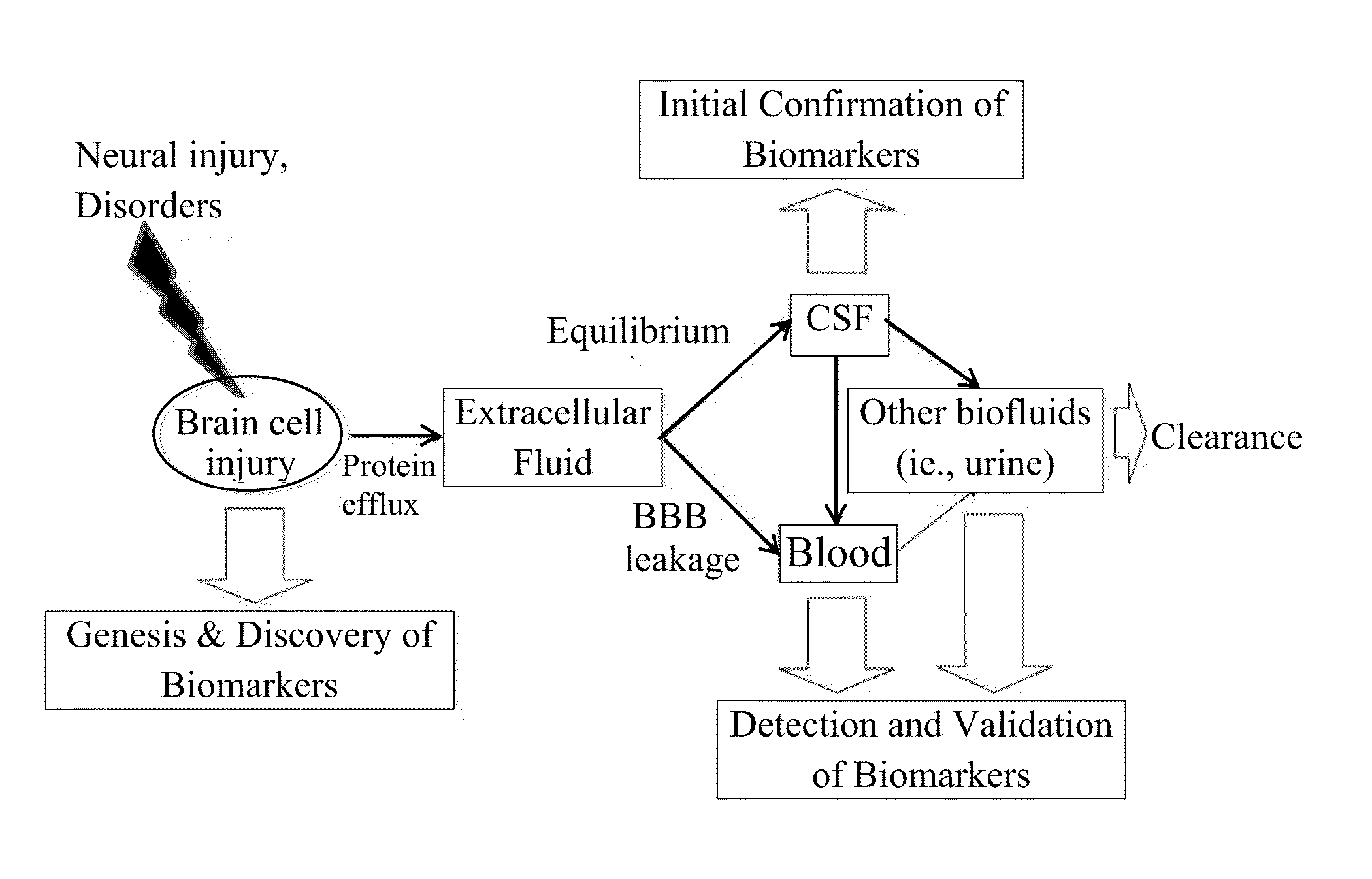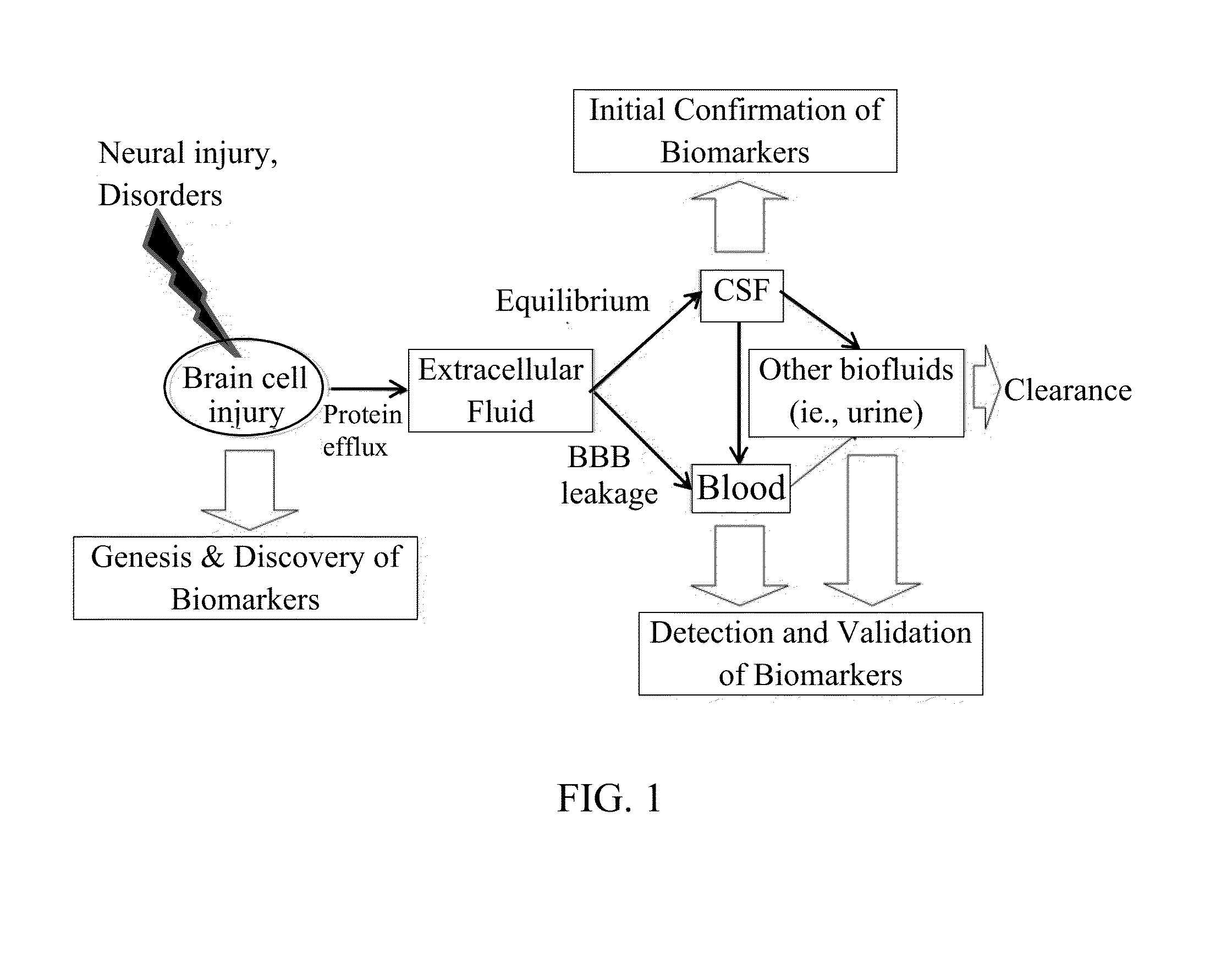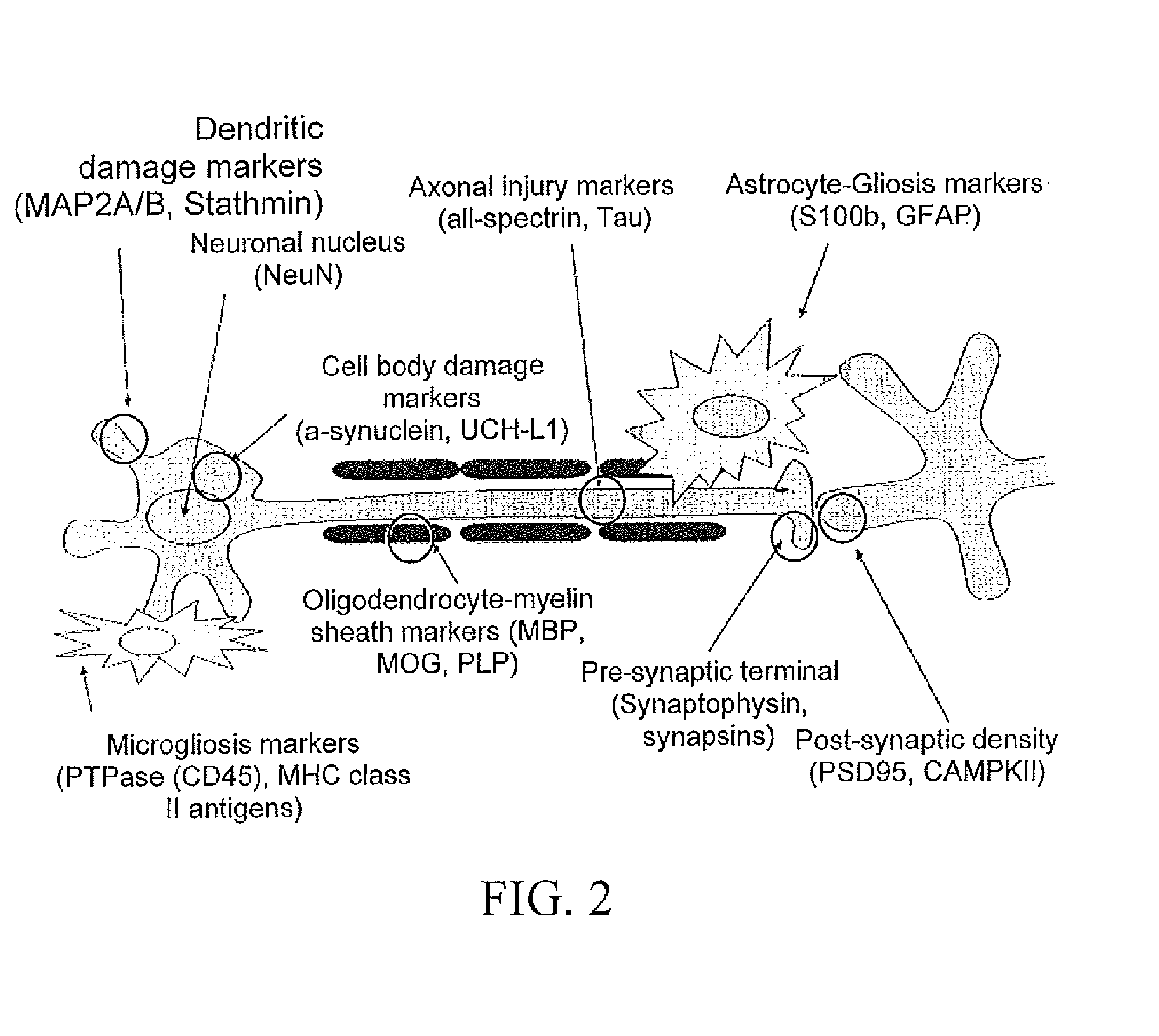In vitro diagnostic devices for nervous system injury and other neural disorders
a nerve system injury and in vitro diagnostic technology, applied in the field of in vitro diagnostic devices, can solve the problems of inability to quickly employ emergency room environment, high cost of ct and mri, and most tbi suffer long-term impairment, etc., and achieve the effect of assisting diagnosis
- Summary
- Abstract
- Description
- Claims
- Application Information
AI Technical Summary
Benefits of technology
Problems solved by technology
Method used
Image
Examples
example 1
Detection of Neural Proteins UCH-L1, p24, and Alpha-Synuclein in CSF of Rodents Following TBI
[0156]TBI was induced in rodents as described above. Following TBI or sham operation or naïve rats, samples of CSF were collected and analyzed for presence of three novel neural protein biomarkers (e.g. UCH-L1 (FIG. 3), p24 and alpha-synuclein. Results, shown in FIG. 3,5, demonstrated independent or concurrent accumulation of UCH-L1 (see FIG. 3), p24 and alpha-synuclein, in the CSF of rodents after TBI. Significantly less of these neural proteins were observed in sham-injured and naïve controls. Each lane in the blots represents a different animal. The sensitivity of this assay permits detection of inter-animal differences, which is valuable for prediction of outcome. The results of this study demonstrated that after TBI, neural proteins accumulated in the CSF in sufficient levels to be easily detectable on Western blots or by other immunoassays such as ELISA.
example 2
Detection of Neural Proteins UCH-L1 and p24 in CSF of Human TBI
[0157]Accumulation of novel neural markers (UCH-L1 and p24) was analyzed in samples of human CSF taken at 24 hr after TBI. From five patients who experienced severe TBI and five neurological controls (normal pressure hydrocephalus. As in the rodent models of TBI, the neural proteins examined (UCH-L1 and p24) were prominent in CSF samples TBI. Levels of these neural proteins were much higher in the TBI patients than in the control patients (e.g. UCH-L1 (FIG. 6). These data demonstrated that after TBI, neural proteins accumulated in human CSF in sufficient levels to be easily detectable on Western blots or by other immunoassays such as ELISA.
Validation of UCH-L1 as a Biomarker of Strokes
[0158]Using an exploratory subgroup analysis comprising the per-protocol treated ischemic stroke patients of the German Multicenter EPO Stroke Trial who did not receive rtPA has confirmed that as an outcome measure of brain damage, serum bi...
example 6
Detection of Neural Proteins UCH-L1 of Human Strokes
[0163]Patients were screened and assessed as described above. Intravenous infusion of recombinant human EPO or placebo was started within 6 hours after symptom onset (day 1) and repeated 24 hours and 48 hours later. The blood for the biomarker analysis was drawn from the patients on days 1, 2, 3, 4, and 7. Serum was aliquoted and stored at −80° C. until assayed. The measurements of S100B, GFAP and UCH-L1 are based on enzyme-linked immunosorbent assays (ELISAs) and were performed blindly without knowledge of any of the clinical information. After statistical analysis of the results, it was shown that ischemic stroke patients, non-qualifying for rtPA treatment had a better clinical course and outcome as compared to placebo (mean difference of 5.3±5.3 in EPO versus 3.3±6.5 in placebo; p=0.039). Results are shown in FIGS. 8B, E and F.
PUM
| Property | Measurement | Unit |
|---|---|---|
| pH | aaaaa | aaaaa |
| pH | aaaaa | aaaaa |
| temperatures | aaaaa | aaaaa |
Abstract
Description
Claims
Application Information
 Login to View More
Login to View More - R&D
- Intellectual Property
- Life Sciences
- Materials
- Tech Scout
- Unparalleled Data Quality
- Higher Quality Content
- 60% Fewer Hallucinations
Browse by: Latest US Patents, China's latest patents, Technical Efficacy Thesaurus, Application Domain, Technology Topic, Popular Technical Reports.
© 2025 PatSnap. All rights reserved.Legal|Privacy policy|Modern Slavery Act Transparency Statement|Sitemap|About US| Contact US: help@patsnap.com



